




ß Why use mysteries?
Mysteries are a natural way to combine logical thinking and problem-solving
with engaging stories, suspense, excitement and fun. Mysteries written
with a focus on science content and methods are an ideal way to immerse
students in the learning process. Read our "Fan
Mail" feedback
ß What makes these science mysteries special? The stories are unique in the way they integrate science into the suspenseful storyline, use characters to break up exposition, and employ a second-person narrative to bring the school-age reader directly into the action.
ß What are these science mysteries like? Each mystery takes the form of an illustrated short story, with the reader included as a character in the narrative. The opening establishes the setting, characters, and the problem(s) to be solved. In the middle pages, the reader gathers data ("clues") about the problem by talking to characters, performing experiments, and so on. The story builds to a "solve-it" page, where the reader is asked to submit a solution to the problem. Doing so directs the reader to an individual appropriate outcome and an exciting conclusion to the story (or in some mysteries, the next episode). See our Mystery Notes for Teachers, below.
ß Do the mysteries support inquiry- and standards-based learning? Yes. We're looking to upgrade our support for standards this year.
ß How does this format take advantage of the Web medium? The Web allows our mystery story to be more visual, interactive, and non-linear, which make the mystery more engaging and fun. The reader can conduct virtual experiments, question characters and experts, receive email replies, and so on.
ß Who sponsored these science mysteries, and why? Our most recent mystery was funded by the Burns Telecom Center to augment the value that Montana JASON could offer its subscribers. Prior to that, we created an "art mystery" to increase children's interest and appreciation in the pre-Columbian exhibits at the North Carolina Museum of Art. We created and produced seven of these online science mysteries for Access Excellence, a high school teachers enhancement site. Genentech, Inc. funded three mysteries with biological themes, The National Health Museum has funded three with human health themes, and the Institute of Food Technologists (IFT) funded one with a human health/food safety theme.
Mystery Notes for Teachers
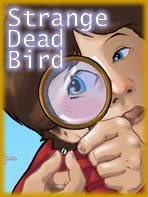
Key themes: Augments the "Disappearing Wetlands theme of the 2004-5 JASON Expedition.
Key concepts: wetlands and riparian ecology, animal biology, infectious diseases, deductive reasoning.
Format: STRANGE DEAD BIRD is a single-episode mystery. The reader makes choices to solve the mystery; if incorrect, they receive a hint and the story rewinds so that they may try again. If correct, they are congratulated and go on to read the epilog.
Interactivity: The story poses realistic choices to the student, and the story plays out according to his or her choices.

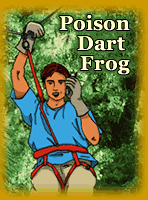
Key themes: Costa Rican art, culture, history and natural history; social science.
Key concepts: Arts and artistry, ancient cultures, wildlife, anthropology.
Format: POISON DART FROG is a single-episode mystery. The reader fills out a form to solve the mystery; if incorrect, they receive a hint and encouragement to try again. If correct, they are congratulated and go on to read the epilog.
Interactivity: Students should peruse the Research Information about art works, Costa Rica, its art works and animals BEFORE they begin the mystery.

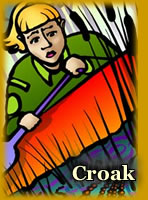
Key themes: ecology, ecosystems, life science, biology.
Key concepts: amphibian/frog extinction, exotic invaders, pollution, predators and predation, interpreting graphs, life cycles, wildlife preservation and management.
Format: CROAK is a single-episode story. The reader submits their solution and an email address; we email back the solution and a "final chapter" in one week, based on the solution they proposed.
Interactivity: In the story, the reader has a number of people to interview and limited time and opportunity to do the interviews. The reader is free to choose the people they wish to interview, and the order of the interviews.


Key themes: human health, food and nutrition, microbiology.
Key concepts: foodborne and waterborne diseases, disease reservoirs and vectors, food handling safety, epidemiology.
Format: TWO FORKS, IDAHO is a single-episode mystery. The reader fills out a form to solve the mystery; if incorrect, they review the clues and try again. If correct, they are congratulated and read the epilog.
Interactivity: The reader has the option to get additional clues within the story. After the key clues have been presented, the reader may choose to solve the mystery, or continue and receive more clues. If they continue, they again get an option to solve the mystery, or continue for a last set of clues.

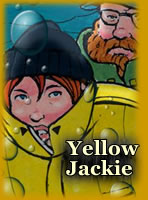
Key themes: human health, epidemiology.
Key concepts: physiological effects of stress and dehydration, infectious diseases (tuberculosis, influenza, pneumonia).
Format: YELLOW JACKIE is a single-episode mystery. The reader fills out a form to solve the mystery; if incorrect, they receive a hint and encouragement to try again. If correct, they are congratulated and read the epilog.
Interactivity: After the intro, the reader can choose whether or not to board a ship with infected people on it. The story is different depending on which choice is made. The solve-it system is also interactive; if the reader chooses an incorrect answer, Jackie delivers a hint and invites the reader to review the clues and try again.

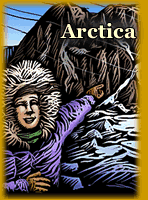
Key themes: exploration, medicine and human health, life science, extreme environments, biology.
Key concepts: Arctic exploration, archaeology, medicine, diseases and vaccination, metal poisoning.
Format: ARCTICA is a three-part mystery (it was originally introduced as a three-week web serial, with a new mystery episode and cliffhanger solve-it question posted every week).
Interactivity: The mystery incorporates the reader's proposed solution seamlessly into the story. If the answer is incorrect, the story turns to show why it's incorrect; the correct answer is given, and the story continues.

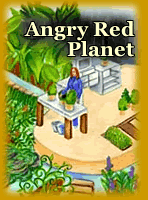
Key themes: ecology, ecosystems, life science, biology.
Key concepts: respiration, photosynthesis, biospheres and closed ecosystems, biochemistry, life cycles, interpreting graphical data.
Format: ANGRY RED PLANET is a single-episode mystery. The reader fills out a form to solve the mystery; if incorrect, they receive a hint and encouragement to try again. If correct, they are congratulated and read the epilog.
Interactivity: The solve-it system is interactive; if the reader chooses an incorrect answer, one of the story characters delivers a hint and invites the reader to review the clues and try again.

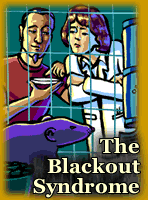
Key themes: microbiology, life science.
Key concepts: diseases, disease vectors, epidemiology, infection, tests and control groups, interpreting tabulated data.
Format: THE BLACKOUT SYNDROME is a three-part mystery (it was originally introduced as a three-week web serial, with a new mystery episode and cliffhanger solve-it question posted every week).
Interactivity: The mystery incorporates the reader's proposed solution seamlessly into the story. If the answer is incorrect, the story turns to show why it's incorrect; the correct answer is given, and the story continues.

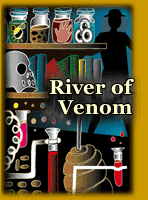
Key themes: human health, life science, biology.
Key concepts: allergies, anaphylactic shock, insect stings.
Format: RIVER OF VENOM is a two-part mystery (it was originally introduced as a two-week web serial, with a new mystery episode and cliffhanger solve-it question posted every week).
Interactivity: The mystery incorporates the reader's proposed solution seamlessly into the story. Also, the reader has two opportunities to request information from a "friend," and will get an actual email in response.

